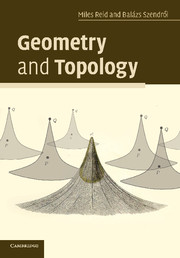|
Geometry provides a whole range of views on the universe, serving as the inspiration, technical toolkit and ultimate
goal for many branches of mathematics and physics. This book introduces the ideas of geometry, and includes a generous
supply of simple explanations and examples. The treatment emphasises coordinate systems and the coordinate changes that
generate symmetries. The discussion moves from Euclidean to non-Euclidean geometries, including spherical and hyperbolic
geometry, and then on to affine and projective linear geometries. Group theory is introduced to treat geometric
symmetries, leading to the unification of geometry and group theory in the Erlangen program. An introduction to basic
topology follows, with the Moebius strip, the Klein bottle and the surface with g handles exemplifying quotient
topologies and the homeomorphism problem. Topology combines with group theory to yield the geometry of transformation
groups, having applications to relativity theory and quantum mechanics. A final chapter features historical discussions
and indications for further reading. With minimal prerequisites, the book provides a first glimpse of many research
topics in modern algebra, geometry and theoretical physics. The book is based on many years' teaching experience, and
is thoroughly class-tested. There are copious illustrations, and each chapter ends with a wide supply of exercises.
|

